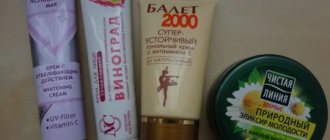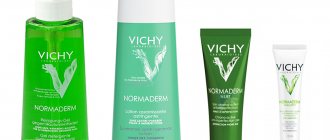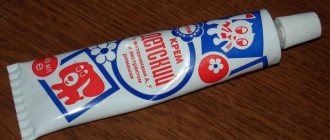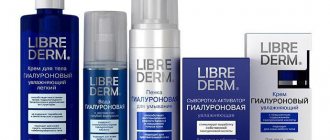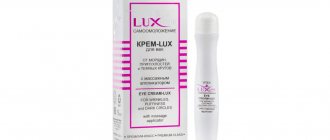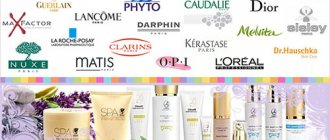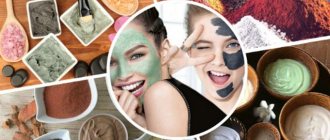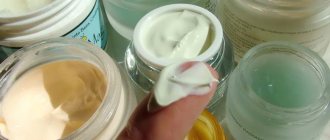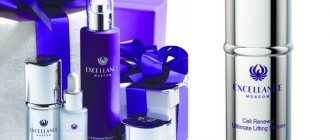Allergies to cosmetics are quite common. Most often, the mucous membranes of the eyes, eyelids, facial skin and décolleté area suffer from an allergic reaction. There are several reasons for allergies to cosmetics. At the same time, the body’s reaction to the use of cosmetics can manifest itself in completely different ways. The most common intolerance to individual components of decorative cosmetics, creams, masks and lotions.
La Roche-Posay
The brand is best known for its care products for sensitive skin. But La Roche-Posay also has decorative cosmetics. And she is hypoallergenic. The most worthy of attention are the Hydreane BB cream, which masks imperfections and at the same time intensively moisturizes the skin and soothes it, and also the Rosaliac CC cream, which, while correcting the tone, primarily fights redness. Both products contain La Roche-Posay thermal water, which takes on the function of protecting and caring for sensitive skin. We talked in more detail about the bestsellers of the French brand here.
Hypoallergenic cosmetics: TOP 10 products
Hypoallergenic cosmetics: TOP 10 products
Sometimes cosmetics cause allergies, turning face and body care into a real challenge. For such cases, there are hypoallergenic cosmetics.
skin care, facial care, body care, food allergies
Allergies to cosmetics are quite common. It occurs when substances contained in cosmetics react with the skin and affect its top layer, causing itching, peeling, rash, swelling and even fever.
For people suffering from this problem, many cosmetic brands produce special hypoallergenic products. This term means that a product so labeled causes fewer allergic reactions than other similar ones. However, there are no uniform standards that allow manufacturers to call their product “hypoallergenic.” It is also difficult for the manufacturer to check such products for allergies during test tests, because each person may have a completely different reaction to a particular product.
Vichy
Hypoallergenic cosmetics brands include Vichy. All the formulas she creates are tested to the utmost rigor to ultimately produce products that are suitable for the most sensitive skin. Vichy even managed to make thick foundation creams for oily, acne-prone skin like this (read about makeup rules for this skin type here): Dermablend 3D masks imperfections under its reliable texture, heals inflammation with salicylic acid and eperulin, and does not cause irritation causes. Also worthy of attention is the Liftactiv Flexilift cream with a lifting effect, which, while masking imperfections, also “tightens” the skin.
Treatment of allergies to cosmetics
Therapy for an allergic reaction involves stopping contact with the allergen substance. If, after applying the product, signs of allergy appear on your facial skin, you should rinse it thoroughly with warm water. Before contacting a doctor, you should take any of the antihistamines that are available in your home medicine cabinet, for example Cetrin®.
Cetrin® is a 2nd generation drug that has a long-lasting therapeutic effect. Back in 2002, it was named the most popular drug, and today confidence in Cetrin® is still at a high level3.
Rules for taking and dosage of the drug Cetrin® when symptoms of an allergic reaction appear:
- children over 6 years old should take ½ tablet twice a day or 1 tablet once a day;
- Adults should use 1 tablet once a day.
Patients with reduced kidney function are prescribed ½ tablet per day, and people with severe chronic renal failure need to take ½ tablet every other day.
The tablet must not be chewed. It must be washed down with 200 ml of water. Taking the drug does not depend on food intake4.
Further use of cosmetics until the causes of the reaction are clarified is contraindicated. After allergy symptoms have subsided, patch tests for allergens are taken. Based on the results, further treatment is prescribed.
Bibliography
- Novik G. Allergy. Immune system / G. Novik, A. Nikanorova. – M.: St. Petersburg, Trade and Publishing House “Amphora”, 2015. – 64 p.
- Cosmetology / ed. L.A Hejazi. – M.: Moscow, Italian Cosmetology, 2005. – 197 p.
- Vertkin A. L. Acute allergic diseases: methodological. recommendations / A.L. Vertkin, K.K. Turlubekov, A.V. Dadykina. – M.: Department of Clinical Pharmacology of the State Educational Institution of Higher Professional Education “Moscow State Medical and Dental University” and NNPOSMP, 2005. – 24 p.
- Instructions for use of the medicinal product for medical use Cetrin®. – Registration number: P N013283/01.
Lancôme
Not all brands of decorative cosmetics have hypoallergenic eye makeup products. Lancôme is an exception in this sense. For example, Hypnôse Volume à Porter mascara: the peculiarity of its composition is that it contains half as much wax as the formulas of many other mascaras. That is why the product is also suitable for sensitive eyes, which often perceive wax as an irritant. At the same time, the other qualities of this mascara are excellent: it makes eyelashes voluminous and fluffy, and does not allow sticking.
Do you use hypoallergenic brands of decorative cosmetics?
Historical reference
Initially, when labeling cosmetics as “hypoallergenic” became popular, the Food and Drug Administration, an agency of the U.S. Department of Health and Human Services, attempted to regulate the use of the term. In 1975, the organization issued a ruling that cosmetics could only be labeled hypoallergenic if scientific studies on humans showed that they caused a significantly lower incidence of adverse skin reactions than similar products without this label. Manufacturers would be responsible for carrying out the necessary testing. But this rule was invalidated by US courts, leaving manufacturers free to use the term at will, most often as a marketing tool.
However, every cosmetic product has ingredients written on its packaging, so consumers who have had allergic reactions or problems with certain substances can avoid purchasing the wrong products by reading labels more carefully.
Gentle care: top 7 creams for sensitive skin
Choosing a cream for sensitive skin is not easy, because any aggressive component can cause irritation or rashes. To ensure that your skincare products do not disappoint, we advise you to pay close attention to the composition of cosmetic products: analyze which ingredients your skin reacts poorly to and exclude them from your beauty routine. We tried to make the task easier for you and made a selection of the best creams for sensitive skin that will make your care delicate and soft.
EISENBERG Intensive nourishing and moisturizing cream for face and neck
The basis of Eisenberg brand cosmetics is the patented Trio-Moléculaire formula, which took 15 years to develop. The technology is based on three natural molecules that saturate the skin with oxygen, restore its protective functions and energize it. In addition, Eisenberg Sensitive Skin Cream contains a balanced complex of natural substances to soothe and moisturize without irritation:
- Shea butter protects and restores the skin while stimulating the production of its own collagen (which is responsible for elasticity and firmness).
- Orange extract relieves inflammation, moisturizes and softens tissues.
- Ascorbic acid stimulates microcirculation in cells.
- Bisabolol fights bacteria and soothes sensitive skin.
Thus, the cream deeply and carefully nourishes the tissues without causing unpleasant reactions on sensitive skin. And with regular use, the face takes on a fresher and healthier look.
WELEDA Cream for hypersensitive facial skin with marshmallow
Weleda cream will especially please sensitive skin, as it does not contain any potentially dangerous components, is suitable for children and even for care for atopic dermatitis. The product contains many natural extracts that soothe tissues and create a protective barrier against ultraviolet radiation and other harmful effects. And medicinal marshmallow is a natural anti-inflammatory and healing agent.
But it is worth noting that the cream is quite nourishing (thanks to coconut, almond and sesame oils) and is suitable for dry skin. People with oily skin types will probably find the product too heavy.
A;T FOX Soothing face cream JASOYUP TEA
The cream formula from the Korean brand A;T FOX is created on the basis of natural protective and caring substances: herbal tea extract, beta-carotene, plant antioxidants. They saturate the cells with beneficial elements, resulting in the skin becoming more toned and radiant. The product can also be used as a base for makeup, because it does not leave a greasy film. The ingredients are exclusively of plant origin and do not contain mineral oils or petrochemical products.
GARNIER Botanical face cream “Rose water”, soothing, for dry and sensitive skin
It’s not for nothing that many people love Garnier products, because the brand’s products are of high quality and equally affordable. The botanical cream formula contains natural ingredients that gently nourish tissues without causing negative reactions:
- Rose water softens the skin and relieves discomfort.
- Vitamin E protects against external influences.
- Shea butter nourishes and retains moisture in tissues.
- Salicylic acid eliminates inflammation, exfoliates and evens out tone.
The cream also does not contain parabens or silicones and will appeal to sensitive skin.
NATURA SIBERICA Day face cream for sensitive skin
This is another cream with a composition that is as safe as possible and rich in active herbal ingredients. The formula includes:
- Chamomile is considered ideal for sensitive skin as it soothes, refreshes and fights inflammation.
- Flax promotes tissue restoration.
- Pine extract normalizes the secretion of the skin glands (regulates the production of sebum).
- Calendula relieves irritation.
- Shea butter actively nourishes tissues and retains moisture.
A nice bonus of the brand: concern for the environment, because the cream is not tested on animals, and its packaging is either biodegradable or recyclable. Plus, all the ingredients in the composition are environmentally and biologically friendly.
CLINIQUE Moisturizing Day Cream for Sensitive Skin Redness Solutions
Clinique care has established itself as one of the best in the mid-price segment. The Redness Solutions line is designed specifically for sensitive skin, which tends to respond with redness to almost any impact. The products are based on Microbiome technology: a patented soothing probiotic designed to restore the balance of the skin microbiome (“good” bacteria that care for the health and appearance of tissues), improve protective functions and relieve irritation. In addition, the formula contains:
- Plant-based antioxidants that nourish skin and protect against ultraviolet radiation.
- Wheat germ extract, healing and stimulating collagen production in tissues.
- Highlander and salicylic acid, which even out the tone and have an antiseptic effect.
- Many other herbal ingredients (tea, inulin, rooibos, algae extract and others) that also actively fight inflammation, soothe, tone and deeply moisturize the skin.
H2O+ Facial moisturizing gel-cream for sensitive skin Hydration Sensitive Collection
American brand H2O+ has released a line of four products specifically for sensitive skin. The moisturizer does not contain parabens, SLS or synthetic fragrances, which often cause irritation or breakouts after using conventional products.
It also contains a large number of natural active substances that soothe tissues and increase their protective barrier:
- Ascophyllum nodosum fights bacteria and stimulates microcirculation.
- Caffeine strengthens the skin and eliminates swelling.
- Linoleic acid softens, moisturizes and actively protects tissue.
- Probiotics (lactobacteria) remove inflammation and additionally take care of the skin.
Sensitive skin is the most demanding and requires special care. Therefore, the primary task when choosing cosmetics is to understand your individual characteristics, because even the safest ingredient in some cases turns out to be the cause of irritation. But if you do not suffer from specific allergies, try the creams from our selection and your sensitive skin will say “thank you”!
Cover photo: @angiecouple.
How to choose baby wipes
Outside the home, sanitary napkins help keep your baby clean. They are often not recommended to be used, but you can wipe your dirty hands while walking. Adult options are not suitable here: they often contain alcohol, fragrances, phthalates and even sodium lauryl sulfate.
Baby wipes can be impregnated with:
- plain water;
- plant extracts (to moisturize and soften the skin, against microorganisms);
- oil (usually jojoba or almond);
- vitamins (to nourish the upper layer of the epidermis).
It’s better not to get carried away with antibacterial wipes. They destroy not only harmful microflora, but also useful ones that protect the skin. It is important to ensure that the wipes are intended for children and do not contain alkalis.
Useful components of care products
A variety of plant extracts are used in cosmetics for babies, including:
- calendula
– has anti-inflammatory and antimicrobial effects; - chamomile
– soothes and softens the epidermis; - olive leaves
– helps improve the skin’s immune defense; - aloe
– moisturizes and heals damage; - strings
- relieves irritation and redness.
Various oils are widely used by manufacturers of cosmetics for newborns:
- sweet almonds
– moisturizes, removes peeling of the epidermis; - flax
– has an anti-inflammatory effect, saturates tissues with omega fatty acids and vitamin E; - shea butter (shea butter)
– helps remove dermatitis and restore the acid-base balance of the skin; - sunflower
– moisturizes the epidermis, saturates it with vitamin E, promotes the regeneration of damaged tissues; - Siberian cedar
– helps cope with flaking and provides antioxidant protection.
What other ingredients may be included in cosmetics for babies:
- panthenol (provitamin B5)
– reduces itching and irritation, removes flaking; - beeswax
– helps heal damage, protects the epidermis from moisture loss; - zinc oxide
– has an antiseptic and antifungal effect, dries out the weeping epidermis; - vitamin E
– takes part in protecting the skin from negative external factors; - vitamin A
– helps remove dryness of the epidermis; - vegetable glycerin
– helps retain moisture in tissues.
Worth a lot
Needless to say, creating cosmetics that contain exclusively natural, highly purified ingredients requires considerable expense.
- Firstly, raw materials are grown or mined in ecologically clean areas of the Earth (unfortunately, there are few of these left).
- Secondly, purification of artificial components (dyes, fragrances, etc.) requires unique equipment.
- Thirdly, careful production control involves the use of high technology, at a level no lower than in the space industry.
- And finally, the invention of optimal and safe formulas for the preservation of natural ingredients is perhaps the most serious, expensive and secret area of production.
Of course, not all manufacturers can afford such expenses, and therefore greater safety is guaranteed by world-famous cosmetic brands that have their own raw material bases, scientific and medical laboratories, and technical development and innovation centers.
But even they cannot 100% guarantee the creation of a product that will never provoke allergies in anyone.
How to choose safe hygiene products
Children's cosmetics and household chemicals are required to undergo certification. If there is no appropriate labeling on the packaging, the product may not even be considered further. If it is present, it’s time to move on to the composition. The safest products for children contain only natural ingredients:
- extracts of medicinal plants;
- vegetable oils;
- natural foaming agents;
- panthenol.
An indication of organic origin always plays in favor of a hygiene product. This means that it consists of 95% plant substances, and this is confirmed by experts.
The presence of vitamins in the composition is not prohibited. For example, an indicator of high-quality oil is its vitamin E content. It is important that the pH of the product, be it cream, shampoo or washing powder, is neutral.
What is the best washing powder for people with allergies?
When choosing a detergent for newborns, young children and allergy sufferers, pay attention to the following points:
- No phosphates.
- Flavorings are minimal, or better yet, completely absent.
- Price is not a measure of quality - unsafe products are often quite expensive.
- Today, phosphate-free and hypoallergenic powders are mainly represented by foreign brands. German and Japanese SMS are especially popular among consumers who care about their own and their family’s health.
When using any SMS, remember:
- Follow recommended doses.
- If a lot of foam forms during washing, you are using a low-quality product.
- High-quality powdered products should not contain sticky granules.
- If you are using children's hypoallergenic powder, but are not sure of its quality, use an additional rinse during washing. Dry and ventilate the laundry well, keeping it in the fresh air for several days. If laundry is dried indoors, it must be constantly ventilated.
Diathesis in children
You should not self-medicate!
Diathesis or excessive tendency of the child’s body to manifest and develop allergic symptoms or conditions of inflammatory processes. Diathesis often occurs in the first years of a child’s life. This disease refers to a specific form of allergy manifestations in childhood. According to statistics, many children in their first and second years of life suffer from diathesis.
The organisms of infants are more susceptible to diathesis. When this form of allergy occurs, so-called diaper rash appears on the skin. These are a kind of areas of the skin that appear on the head in its scalp. In addition, with diathesis, the child notices the appearance of a milky scab that forms in the area of the bright red cheeks.
In most cases, the cause of diathesis in infants is the food they eat. This could be the wrong choice of artificial food for the baby or the wrong nutrition of the expectant mother carrying the baby. Manifestations of diathesis serve as a harbinger of the appearance in the future of infants of such diseases as: psoriasis, seborrheic dermatitis, eczema, neurodermatitis. Therefore, the expectant mother should carefully monitor her own diet, exclude quick snacks, not eat foods containing large amounts of dyes and carcinogens, not use genetically modified vegetables and fruits in cooking, and also give up alcohol.
The causes of diathesis in children are frequent manifestations of toxicosis during pregnancy, the use of various types of pharmacotherapy during the baby’s intrauterine development, as well as excessive consumption of food allergens by the expectant mother (citrus fruits, nuts, eggs, honey).
Which oils are suitable for newborns
Let us emphasize right away: we are talking about products for nourishing and moisturizing the skin, and not about essential oils. The latter are prohibited for such babies, although sometimes they are suggested to be added to baths to improve sleep.
Skin oil prevents the appearance of physiological infant seborrhea. It is also used for infant massage. It is allowed to use only products of natural origin. These can be oils:
- sea buckthorn;
- peach;
- from apricot kernels;
- olive;
- sunflower;
- sesame;
- linen;
- tea tree;
- almond;
- shi;
- Japanese camellia.
Such products may contain a large number of components. Therefore, it is important not to stop at the discovered “good” ingredient, but to review the composition to the end. You need to make sure that it does not contain isopropyl palmitate and all kinds of preservatives.
